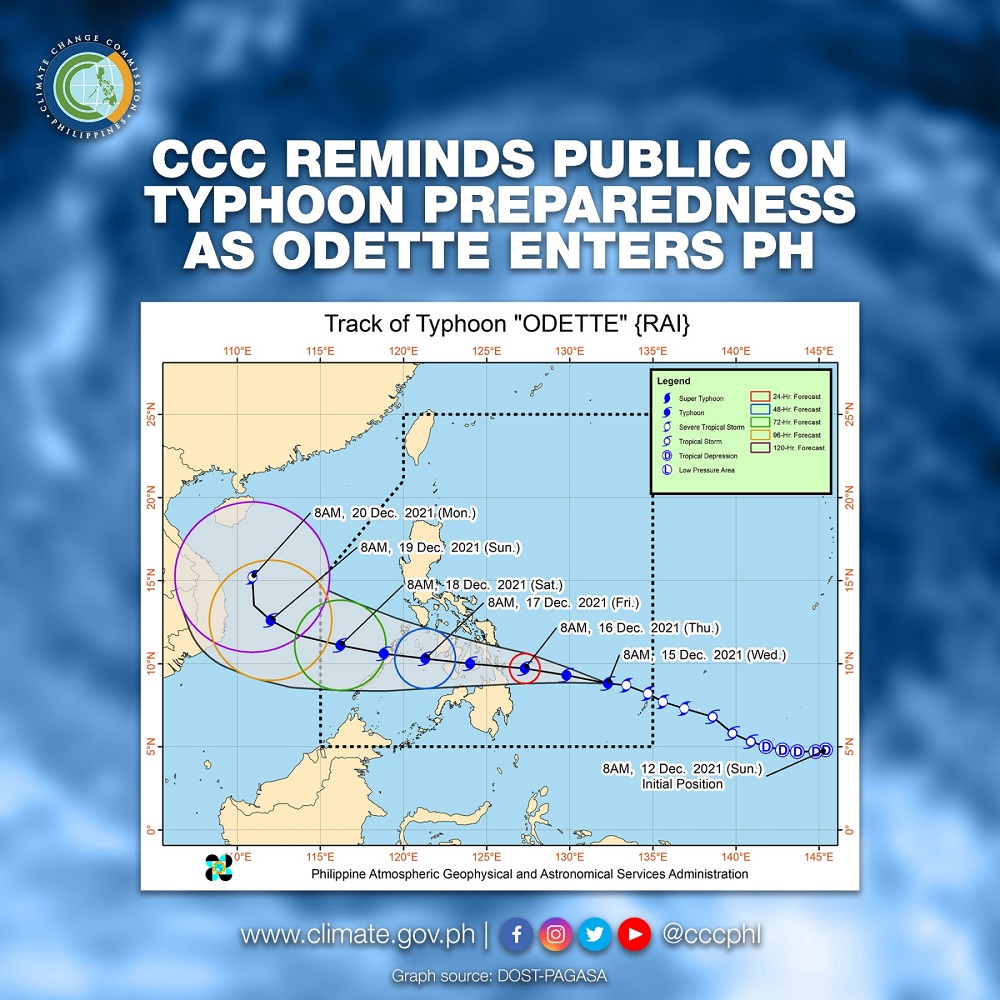
December 14, 2021 Tuesday

MANILA, 15 December 2021 — The Climate Change Commission (CCC) reminds the local government units and the citizens to prepare as Typhoon Odette enters the Philippine Area of Responsibility and is expected to make landfall within the vicinity of Caraga or Eastern Samar on Thursday afternoon or evening.
According to the latest bulletin of PAGASA issued at 11:00 AM today, Typhoon Odette was estimated at 590 km East of Hinatuan, Surigao del Sur, with maximum sustained winds of 120 km/h near the center, gustiness of up to 150 km/h, and central pressure of 975 hPa.
Tropical Cyclone Wind Signal No. 2 was raised on the Eastern portion of Surigao del Norte (Claver, Siargao and Bucas Grande Islands) and Surigao del Sur, while 28 provinces and areas are listed under Tropical Cyclone Wind Signal No. 1.
Residents especially those in areas with public storm warning signals should regularly monitor weather updates and advisories for evacuation; while disaster preparedness and response agencies should be on alert for emergencies and concerned government departments ready to provide basic needs and relief items for residents in temporary shelters and affected areas.
With the Philippines being regularly visited by typhoons every year, the CCC urged the public to be aware of early warnings issued by their local government units and enhance their knowledge on disaster preparedness measures, especially that we are now experiencing stronger, more intense typhoons due to the changing climate.
Among the top 10 climate-induced risks identified by the CCC’s National Panel of Technical Experts are flooding; increase in frequency and severity of tropical cyclones; extreme rainfall; and wind patterns.
The CCC encourages local government units, especially those in the vulnerable communities, to intensify its climate change adaptation programs with disaster prevention and preparedness as its priority.
Adaptation actions include early warning communication down to the sitio or purok level; nature-based solutions such as planting of mangroves and trees; creation of permanent evacuation facilities; enhancing preparedness of hospitals and medical facilities; and providing training on every barangay and local government officials on disaster preparedness.